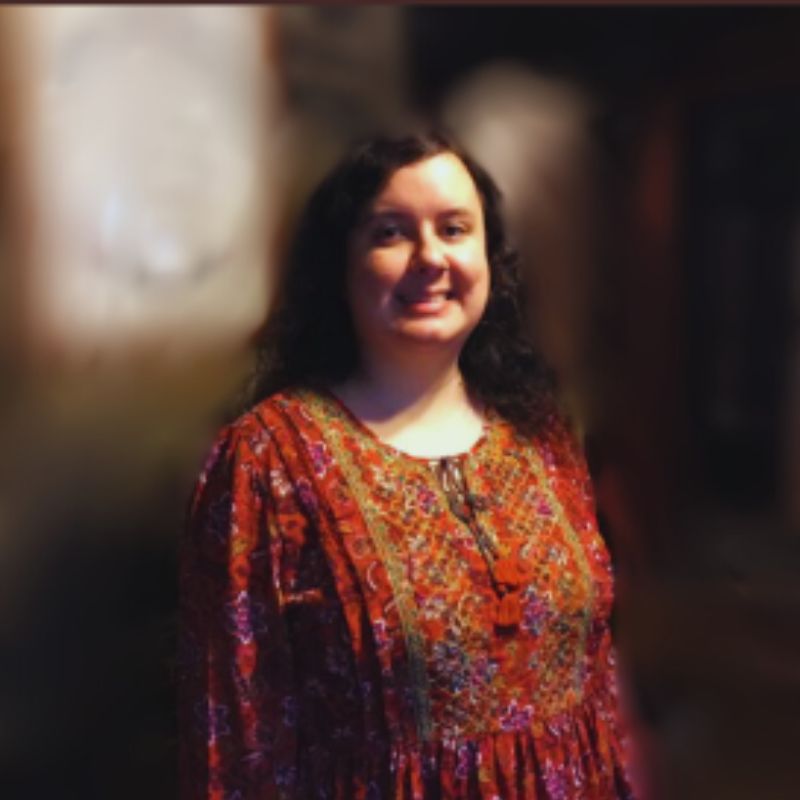Scripture presents us with two genealogies of Jesus’ human ancestry. Although He is fully God, He entered the world and was born of the virgin Mary.
Both her lineage and that of Joseph, with whom Jesus was identified though Joseph was not His physical father, place Him in the ancestry of the house of David and the tribe of Judah.
An interesting part of the genealogy in Matthew is that women are mentioned. Typically, genealogies in the Bible do not refer to women except in special circumstances. Most of the lineages detail fathers and sons, but rarely mothers and daughters.
There is a reason Matthew chose to include the names of these women, and we are wise to take note of them.
So, who are these women who forwarded the line of the Messiah and what can they teach us?
1. Tamar
In the Book of Genesis, we read about Tamar, who married Judah’s son Er. Before Er ever gave Tamar a son, he died because of wickedness (Genesis 38:6-7). As was the custom, to preserve the line of the family, Tamar was given in marriage to Er’s brother, Onan (Genesis 38:8).
However, Onan did not want a son who was not counted as his own, so he did not comply with Judah’s command. Eventually, Onan died too (see Genesis 38:9-10).
Although Judah promised that he would give his third son, Shelah, in marriage to Tamar, this did not happen (Genesis 38:11).
Judah did not fulfill his promise and did not uphold the standard that would later be known as the levirate law (Deuteronomy 25:5-10).
After many years of waiting, Tamar decided to take matters into her own hands. She deceived Judah into thinking she was a shrine prostitute and he impregnated her (Genesis 38:13-19).
Judah found out about her pregnancy and planned to kill her because of the prostitution (Genesis 38:24). When he found out that he had unknowingly taken part in the pregnancy, he saw that he had done wrong in not keeping his promise (Genesis 38:25-26).
Thus, Tamar gave birth to twins, Perez and Zerah, who carried on the line of Judah (Genesis 38:27-30). Perez became the carrier of the Messianic line (Matthew 1:3).
We might wonder why such a complicated story filled with sinful actions and deception is part of Jesus’ genealogy. The story, though, shows us that God is working even when people choose to do wrong.
A woman such as Tamar might be an unconventional choice for God to carry the lineage of the Messiah through, but she is remarkable for being included in Jesus’ genealogy. Even the sinful actions of humans cannot stop the Lord’s plans.
2. Rahab
Another woman mentioned in the genealogy recorded in Matthew is Rahab, the mother of Boaz (Matthew 1:5). Like Tamar, she does not have the best reputation. Not only was she a Canaanite, but many commentators argue that was a prostitute.
There is discussion over whether the Hebrew word for “prostitute” in Joshua 2:1 should be rendered “innkeeper,” but most modern translations render the word as “prostitute” (see NIV and ESV).
Despite her background, Rahab had heard about the Lord and placed faith in Him. When she decided to hide the Israelite spies, she told them about how she had heard about everything God had done in bringing Israel out of Egypt.
Because of that testimony, she knew that “the Lord your God is God in heaven above and on the earth below” (Joshua 2:11). Specifically, she used God’s divine name, Yahweh, showing her personal faith in Him.
Since she hid the Israelite spies and helped them escape the city, Rahab and her family were protected during the destruction of Jericho.
Scripture states that Rahab lived among the Israelites (Joshua 6:24-25). Later, she married an Israelite man named Salmon and gave birth to Boaz.
We can learn a great deal from Rahab’s story. Despite her identity as a Canaanite and her background as a prostitute, she courageously chose to identify with the Lord and His chosen people.
Her decision was dangerous, but worth it in knowing the true and living Lord. When individuals today choose to place faith in Jesus, they too are making a risky decision that could cost them a great deal. However, like Rahab, believers today know that having a relationship with Christ the Lord is worth any cost.
From Rahab’s inclusion in Jesus’ genealogy, we also see how Christ came to save all people. He died for the sins of all people, regardless of their nationality or ethnic identity (1 John 2:2). Jews and Gentiles alike can receive eternal life and forgiveness of sins through placing faith in Jesus’ death and resurrection (Romans 10:12-13).
3. Ruth
Just as Rahab was an outsider to Israel, so was Ruth. She was a Moabite, which meant she was identified with a nation of people who did not follow or worship God.
However, after all the men in Naomi’s family died, including Ruth’s husband, she decided to return to Israel. Ruth chose to stay with her mother-in-law and went with her, proving to be a woman of faith and character.
Out of love for Naomi, Ruth bravely left her homeland and everything she knew. She told Naomi, “Where you go I will go, and where you stay I will stay. Your people will be my people and your God my God” (Ruth 1:16).
In a way, we see exhibited in the life of Ruth what Jesus calls us to do — to leave everything and follow Him (Matthew 16:24-26). Believers today need that same love and commitment to Christ that Ruth exhibited.
Ruth further showed her love for Naomi by going out to work in the fields to collect and thresh grain (Ruth 2:17-18). As a childless widow, Naomi had no means to support herself, so Ruth’s work was a great blessing.
The job was physically exhausting, but Ruth consistently worked to provide food for her mother-in-law and herself. In the example of Ruth, we see the Proverbs 31 woman exemplified.
She had arms that were strong for the task of gathering sheaves and worked diligently (Proverbs 31:17). All Christians can learn from her hardworking spirit driven by love.
Eventually, once Naomi discovered that Boaz was a kinsman redeemer, she worked to get Ruth and Boaz together (Ruth 2:20; 3:1-6).
After they married, Ruth gave birth to Obed, who was the grandfather of David (Matthew 1:5-6). Through this lineage came Jesus the Messiah.
Though an outsider, Ruth was a woman of faith who displayed sacrificial love for Naomi and trust in the Lord.
As the people of the town said, Ruth was better than seven sons to Naomi, for she continued the lineage of Naomi’s family (Ruth 4:15). Her example shows that women who faithfully love and serve God are of immeasurable value.
4. Bathsheba
Matthew records another surprising woman in Jesus’ genealogy. Although he does not mention her by name, he describes her as the mother of Solomon and the former wife of Uriah (Matthew 1:6).
From the biblical record, we know that this is Bathsheba who had been married to Uriah, one of David’s mighty men (2 Samuel 11:3; 23:39).
What Bathsheba is most known for is King David taking advantage of her. He saw her one night while she was bathing and brought her into the palace (2 Samuel 11:2-5).
Though Scripture does not mention what Bathsheba thought of the matter, she became pregnant. To cover up his sin, David murdered Uriah, an act that was condemned by the Lord (2 Samuel 11:16-17, 27; 12:9-10). He then took Bathsheba as his wife.
David repented of his sexual misconduct and murder, and God forgave him (2 Samuel 12:13). However, because of the unbiblical union between Bathsheba and David, their first child died (2 Samuel 12:14, 19). Later, after a time of grieving, Bathsheba gave birth to Solomon (2 Samuel 12:24-25).
Solomon’s birth was important because he would become king after his father, which David vowed to Bathsheba and to the Lord (see 1 Kings 1:30). Problems arose, though, when David grew old and did not try to prevent Adonijah from taking the throne (1 Kings 1:5-6).
Following the guidance of Nathan the prophet, Bathsheba reminded David of the promise that he made to her in the presence of the Lord (1 Kings 1:15-21). Thus, Solomon became king.
Although we commonly associate Bathsheba with David’s adulterous affair, there are other lessons to learn from her life.
From her example, we see how God’s purpose will prevail. The Lord used Bathsheba to remind David of the promise he made — that Solomon would sit on the throne.
He was chosen to be David’s successor and the one who would build the Temple (1 Chronicles 28:6). We can trust that no matter what happens, God is working to accomplish His plan.
5. Mary
Finally, we come to the last woman mentioned in Jesus’ genealogy — Mary the mother of Christ. The angel Gabriel told her that she would give birth to the Savior, even though she was a virgin.
Despite the challenges and fear this would have brought to young Mary, she displayed great faith in the Lord. As she told the angel, “I am the Lord’s servant. May everything you have said about me come true” (Luke 1:38, NLT).
Many of us are familiar with Mary’s story and how she gave birth to Jesus. We remember her part in Jesus’ first coming and take note of her bravery and faith.
However, in the events, she would have faced uncertainty, challenges, and controversy. She was unmarried and pregnant, which would have tarnished her reputation.
Not only that, but she was also at risk of being punished with death. Yet she trusted the Lord.
From the Nativity story, we are reminded of the truth that “God chose the lowly things of this world and the despised things — and the things that are not — to nullify the things that are” (1 Corinthians 1:28).
This reflects what Mary stated in her prayer, known as the Magnificat, “he has brought down the mighty from their thrones and exalted those of humble estate” (Luke 1:52, ESV).
The world would have expected the Messiah to be born into a wealthy and powerful family surrounded by luxury.
In contrast to these expectations, He was born in a manger to a lowly Israelite girl. God uses the weak, lowly, and despised things of the world to fulfill His purposes.
What Does This Mean?
Each of the women listed in Jesus’ genealogy was not what we would expect to be in the lineage of the King of kings and Lord of Lords. All the women were involved in controversy, either because of circumstances or their backgrounds.
Today, we would not label women like them as noteworthy, yet Tamar, Rahab, Ruth, Bathsheba, and Mary are remarkable because they are mentioned in Jesus’ genealogy.
In choosing outcasts and outsiders, God shows that He can use anyone to accomplish His will. Nothing can stop His plans, not even the sinful actions and choices of humans.
Furthermore, the inclusion of women from other nations, such as Rahab and Ruth, illustrates that Jesus is the Savior of the world. He was born into the Jewish line of Judah, to the house of David, but He came to die for all people.
No one is too sinful, broken, or tarnished to receive the gift of salvation and live a new life devoted to the Lord. The women in Jesus’ genealogy demonstrate that truth.
For further reading:
5 Reasons Why Christians Should Read the Genealogies in the Bible
Are the Genealogies in the Bible Important?
Is it Important to Know Jesus’ Family Tree at Christmas?
Photo Credit: ©iStock/Getty Images Plus




